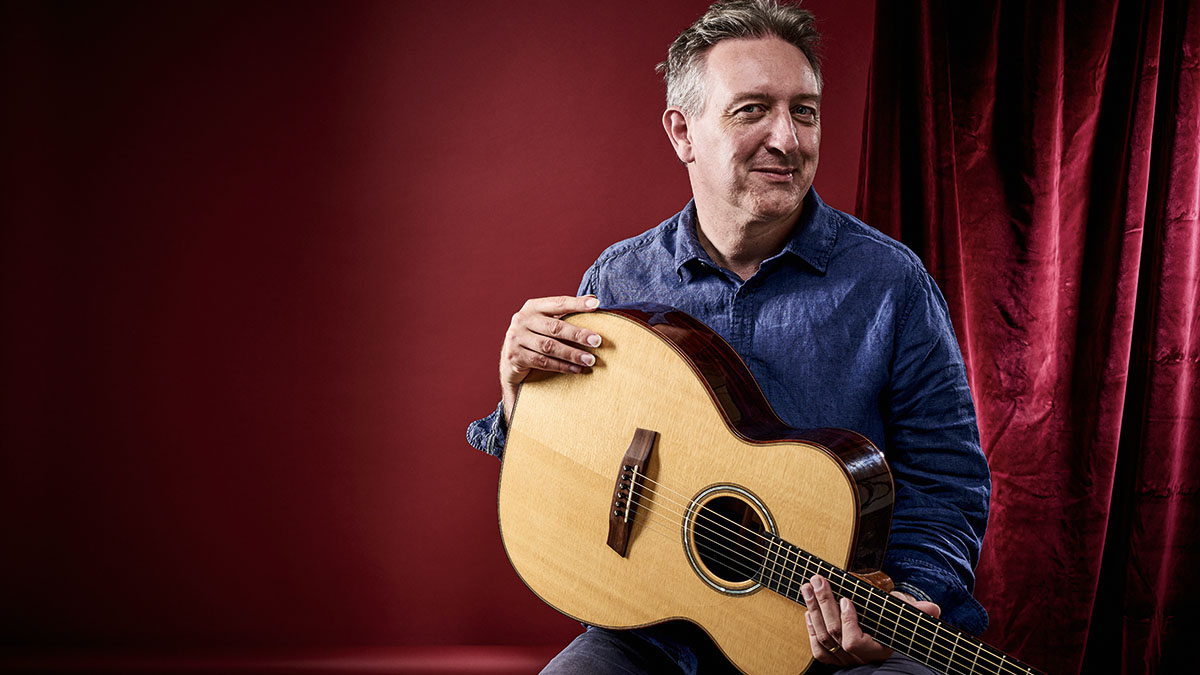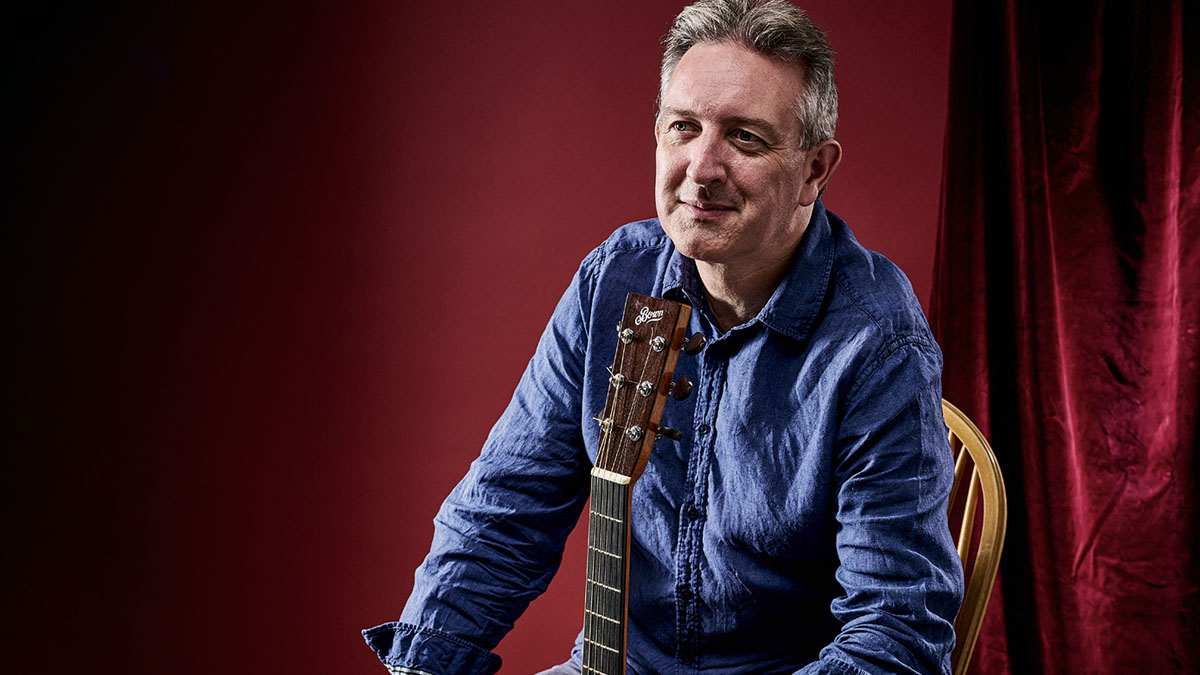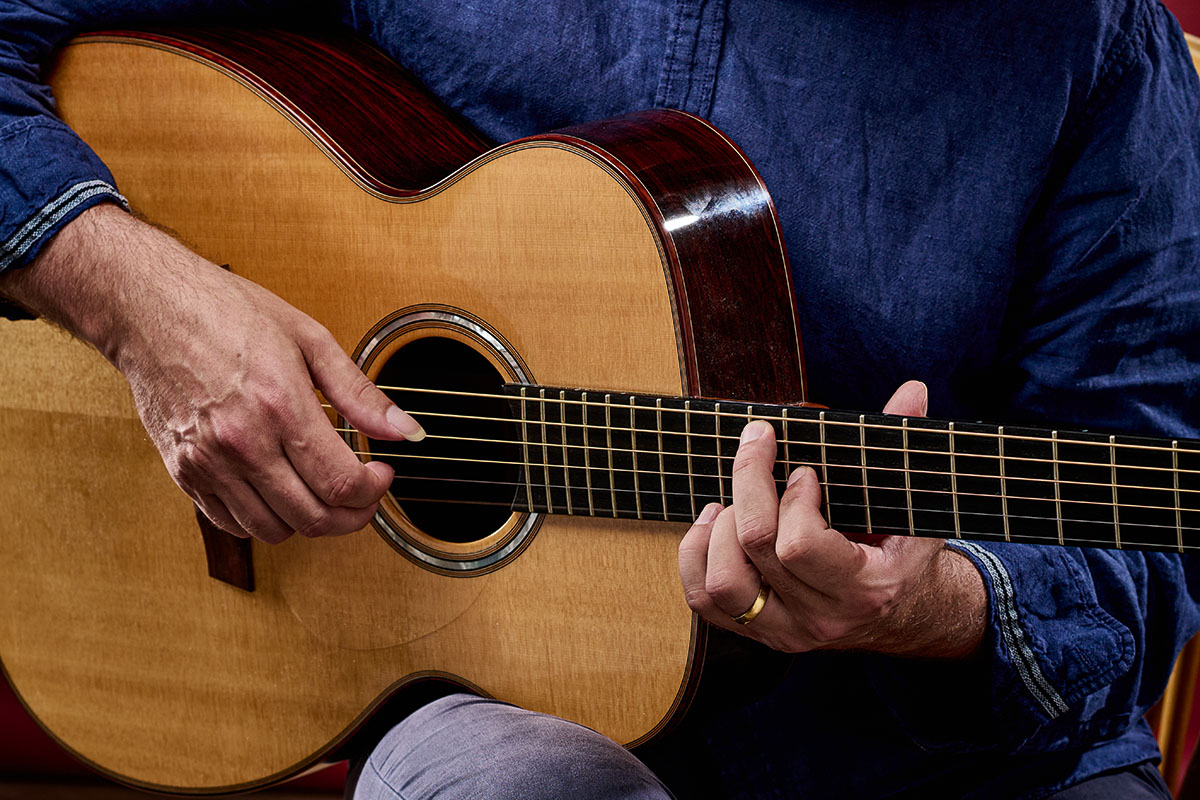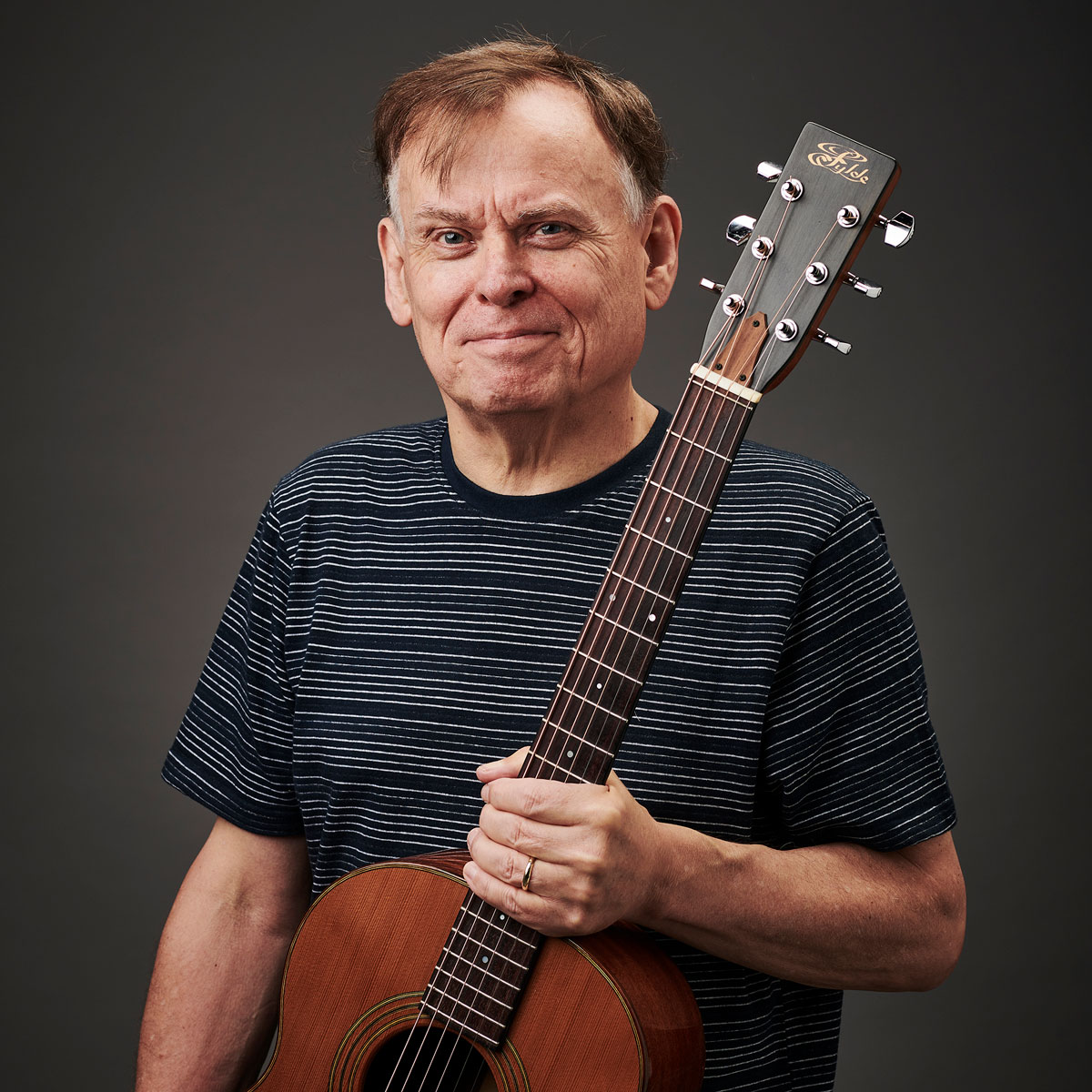“It’s hard to deliver a gig to a chest of drawers in your bedroom. You worry about technique, then the recording can sound clinical”: How British acoustic great Clive Carroll tackled John Renbourn classics – and the psychological hurdles of home recording
Carroll’s new double-album, The Abbott, sees him perform the late John Renbourn’s work – he explains why and how he did it, and offers an in-depth guide to performing Renbourn’s masterpieces

Fingerstyle acoustic maestro Clive Carroll first met John Renbourn almost by accident. Studying at a London music conservatory, Clive decided to go home to his parents’ house one weekend and noticed that Renbourn was playing at his local folk club. He seized the opportunity, contacted the organiser and asked if he could open the show as support.
“So I turned up armed with some Elizabethan lute galliards, some Joe Pass-influenced numbers and some original pieces as well,” he tells us. “I met John briefly before I started, but what I didn’t realise was that he came up and listened to my entire set.”
By the end of the night, John and Clive realised they shared a lot of musical tastes, specifically medieval/Renaissance music, jazz and some contemporary classical music.
It became the basis for a friendship and touring partnership that lasted until Renbourn’s death in 2015. Since then, the occasional Renbourn piece had found its way into Clive’s setlist, but now his enthusiasm for his late mentor’s music has expanded into a CD and tour.
Looking back, how much of a bonus was your formal classical training?
“Well, I found that college was a great technique builder, and it opened my eyes and ears to music I would never have had the chance to study – or perhaps wouldn’t have wanted to, either. You’ve got to get this essay on Olivier Messiaen in by Friday, and so you’d better start studying. It was great to be told to do something and, musically, I think it was really helpful because you listen differently.”
“When you start studying the inner workings of melody, harmony and rhythm you can’t listen to music the same way, and it shapes the way you write, as well. An interesting thing I’ve noticed in recent years is that when I was at music college, I was given a huge list of repertoires to learn on classical guitar that included a wide variety of genres.
Get The Pick Newsletter
All the latest guitar news, interviews, lessons, reviews, deals and more, direct to your inbox!
“And I’m thinking specifically of JS Bach. It was basically a suite a month and I learned them all because we had to. Then you had to perform either at an end-of-year recital or a lunchtime recital. There was a performance goal in sight, so you had to get it done.”
Tell us more what happened after that first gig where you met John Renbourn.
“I was really fortunate that John took an interest in what I was up to and invited me on the road. So I went straight from music college to touring with John in Europe, the UK and the US. We played a lot of concerts. I would open the shows, he would play the main gig, and then we’d play a few duos to finish the night.
“For me, it was the perfect introduction to that world of playing in front of Renbourn fans and acoustic music fans. Further on down the line we hosted a few workshops, and we also wrote a film soundtrack together.”
“A few years ago, in 2021, about six years after John died, I wanted to learn a few of his solo guitar pieces like The Lady And The Unicorn, Another Monday, Faro’s Rag and all the classics that have done the rounds in the acoustic guitar world that Renbourn didn’t play live.
“So I thought it’d be fun to learn a whole bunch of these pieces and perhaps perform them live. But after learning a few classics, curiosity got the better of me and I ended up with a double-album’s worth of material that I thought might be fun to record.
“Half of the album is on solo guitar, and the other half is either duos, groups or larger ensembles. It also includes two pieces that have never been recorded. They are for medieval ensemble, two guitars and electric bass and called Intrada, which is an introduction, and Danse Royale.
“I found the pieces in the same folder as Estampie, which is a great piece of his from the album Traveller’s Prayer. He’d arranged some parts, which tells me that he’d intended to record it at some point but hadn’t found the right album yet.”
Which microphones did you use to record the guitar on The Abbott?
“I like the natural sound of the acoustic guitar, as opposed to a processed pickup sound. Though I do use the pickup sound from time to time for a specific colour, I don’t rely on it. So for the most part, I favour the large diaphragm [mic] sound, like a pair of [Neumann] U 87s, and I have an SE Electronics [Z5600a MKII] large diaphragm mic. There’s a bit more ‘air’ to the overall sound for fingerstyle guitar.
“I think when you’re mixing a guitar within a track that has three, four, five or more players, you really need to place your guitar so it can’t take over the whole speaker system. Then I might use a Royer, or a Neumann KM 184 or something like that.
“For the most part, they were large diaphragm mics and then maybe a small condenser for a bit of room sound. There are a couple of pieces that have DI on them, but I think they’re the ones that I needed some chorus effects on.
“Renbourn liked a little chorus from time to time, so I used DI for the chorus – that kind of rich bottom-end that you could never achieve with a microphone. It was basically a bunch of Neumanns into a [Universal Audio] Apollo x8 audio interface recorded at 24-bit 48kHz into Logic. I used a stereo Neve 1073 preamp and that’s it. Just a dash of reverb here and there.”
How was the whole recording experience for you?
“It’s great to have some high-end gear; the actual hi-fi quality sounds expensive, but at the end of the day, it’s all down to the performance. As long as you can capture that somehow, all the hardware is a bonus. But it means nothing without the delivery.
“And it’s quite hard, I find, because I’m a live performer in terms of delivering an interpretation and so I play differently. It’s very hard to deliver a gig to a chest of drawers in your bedroom. You get overly worried about technique, then the recording can sound clinical and sterile. And that’s a huge learning curve.
“Actually, I don’t think it ever goes away. There are some people that are brilliant at it; I’ve had to learn. I hear some of my earlier records and I can hear not necessarily the panic, but that there are other people in the room, saying, ‘Okay, Mr Carroll. Whenever you’re ready.’
“So having the opportunity to sit back and work up a performance and then prepare yourself psychologically to try to deliver it as if you’re in a gig – it’s a privileged position, really, we have in this day and age.”
Which studios did you use for the recording?
“For the most part there were two locations: one was the Premises Studios in East London and the other one was at ‘The Landing’ in Martlesham, Suffolk. And basically that means upstairs on the landing [at Clive’s house] because that had the best acoustics!”
The Lady and the Unicorn is a quite delicate lute-like piece. I had to record it at night because I tried doing it in the daytime and there was always the thought in the back of my mind that a lawn mower is going to start up
How did you cope with extraneous noise that comes with recording in a domestic environment?
“It was really difficult, actually. Recording is all psychological. I’ve worked quite a lot in studios as a session player, and you just get on with it because you have to. Whereas when you record at home, you can stop. And psychologically, that can be quite a difficult hurdle.
“You do have the luxury of being able to record whenever you like; if inspiration strikes at 3am, you can just flick on the red light and off you go. But it’s very easy to stop and think, ‘Oh, I could do that better.’ But then, after half a dozen takes, you’ve lost that initial spark that you hear when you play back the first and second takes. So all of these recordings are either first or second takes with the minimum amount of editing.

“But there was another psychological meltdown, which was that I never knew when the next car was going to roll past. And some of it was done in the summertime so you had the birds to contend with. And lawn mowers. And strimmers…
“So I might be recording a piece – I’m thinking specifically of The Lady And The Unicorn, which is a quite delicate lute-like piece. I had to record it at night because I tried doing it in the daytime and, while I could do it, there was always the thought in the back of my mind that a lawn mower is going to start up in a minute, even though it never did.
“I just got myself into that state. So I had to get up a little later so that I was awake in the evenings. Because the other downside is recording at 9 o’clock at night also means that your performance might sound a little tired. So sometimes I had a window of, say, 9 to 9:45 and if I didn’t get it I’d just shut the lid [of the laptop] and try again tomorrow.”
Have you changed your live setup for the forthcoming tour?
“Yeah. It’s very hard sometimes, delivering a gig with a pickup system, because you’re at the mercy of the sound man. Specifically, if it’s too trebly, you feel that brittle pickup sound when your fingers touch the strings.
“I learned to deal with that over the years by having a blended system – a pickup/microphone combination where I just used the bass end from the pickup, and the mids and the treble from the microphone. What you can’t do, though, is play quieter; it still sounds like a pickup. If you’re just tickling the strings, it hasn’t got the same sonic vibe as the microphones.
“It was actually during lockdown, when we were all delivering gigs from our living rooms, that I landed back in the world of a microphone-only performance and I got quite used to it. So now I’ve just got two small condenser mics and it’s great. I can play into the mics, I can back off the mics. I have them panned slightly and I have little reverb and that’s it. It suits the music I’m playing right now, especially for this Renbourn project.”

Tell us about your new Bown acoustic.
“I’m used to playing OM-sized guitars and this is an OMX, which means it’s about half an inch wider and deeper. It doesn’t sound like much, but it’s causing havoc with my right arm [laughs]. The extra half-inch there just means your fingers aren’t quite where they used to be. But the sound is great.
“There’s a much more rich bottom-end and midrange. I’ve been privileged to have Brazilian [rosewood] back and sides instruments all the time, but this one has Madagascan back and sides with a spruce top and it sounds big and rich already.
“I’ve been playing it in for the whole summer at various festivals, gigs and workshops and it’s been sitting out in the sweltering heat and in the comfy confines of a recording studio and is managing to deal with all those situations. I’m quite enjoying it.”
- The Abbott is available now.
With over 30 years’ experience writing for guitar magazines, including at one time occupying the role of editor for Guitarist and Guitar Techniques, David is also the best-selling author of a number of guitar books for Sanctuary Publishing, Music Sales, Mel Bay and Hal Leonard. As a player he has performed with blues sax legend Dick Heckstall-Smith, played rock ’n’ roll in Marty Wilde’s band, duetted with Martin Taylor and taken part in charity gigs backing Gary Moore, Bernie Marsden and Robbie McIntosh, among others. An avid composer of acoustic guitar instrumentals, he has released two acclaimed albums, Nocturnal and Arboretum.
“Every tour was the best I could have done. It was only after that I would listen to more Grateful Dead and realize I hadn’t come close”: John Mayer and Bob Weir reflect on 10 years of Dead & Company – and why the Sphere forced them to reassess everything
“Last time we were here, in ’89, we played with Slash on this stage. I don't remember what we did...” Slash makes surprise appearance at former Hanoi Rocks singer Michael Monroe's show at the Whisky a Go Go








![John Mayer and Bob Weir [left] of Dead & Company photographed against a grey background. Mayer wears a blue overshirt and has his signature Silver Sky on his shoulder. Weir wears grey and a bolo tie.](https://cdn.mos.cms.futurecdn.net/C6niSAybzVCHoYcpJ8ZZgE.jpg)

![A black-and-white action shot of Sergeant Thunderhoof perform live: [from left] Mark Sayer, Dan Flitcroft, Jim Camp and Josh Gallop](https://cdn.mos.cms.futurecdn.net/am3UhJbsxAE239XRRZ8zC8.jpg)






